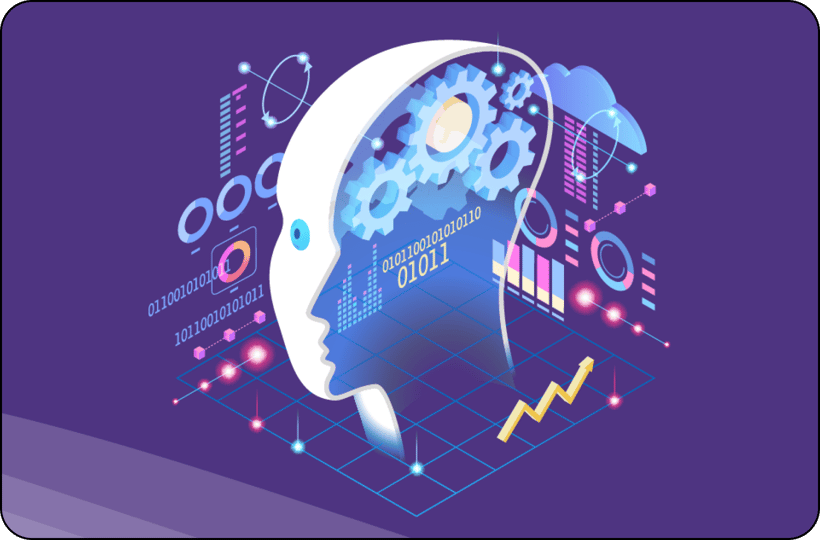Mobile learning: the solution for revolutionizing the learning landscape

The conversation around mobile learning has changed in recent years. Once viewed as merely a technical consideration (i.e., making sure training “works” on mobile devices), organizations now recognize mobile learning’s unique potential. The cadence of mobile learning is perfectly aligned with contemporary learners’ needs, and whether the method used is microlearning, spaced learning, learning journeys, continuous learning cultures, or personalized learning, organizations are delivering more value.However, in the new era of mobile learning, many organizations struggle with where to start. Best-in-class organizations use a shift to mobile as a way to rethink their learning strategy, rather than simply update a mode of delivery. Here are a few real-life examples.

- OnboardingMobile learning proves particularly effective as an onboarding tool in deskless environments such as retail, in-field technical support, and safety. For example, one global coffee retailer, challenged with rapid scalability in emerging markets, uses mobile deployment to streamline competency formation for its newly hired baristas, ensuring a consistent brand experience.Additionally, mobile learning promotes a more journey-driven approach to onboarding, taking the pressure off single-event training. Employees now have a tool in their pocket that provides gradual reinforcement, helping them recall hundreds of espresso drink combinations in the moment.Adaptive retrieval practices also help support the onboarding journey in the initial phases of the baristas’ tenure. Push notifications remind baristas to continue working on their skills, while weekly challenges, mini-games, and leaderboards help sustain engagement. Flashcards (featuring information such as the right syrup ratios for customized drinks), are self-paced reference tools, which they can use in the moment of need.
- UpskillingA Canadian financial services advisory organization required a radical approach to reach its unique target audience: entrepreneurs. Familiar with entrepreneurs’ resistance to standard training modalities, the organization created a mobile solution with a new learning cadence customized for its ever-distracted, highly-resistant learners, replacing large-format, single-event courseware with quick lessons (of no more than five minutes each), ongoing knowledge checks, personalized learning paths, and a strong resource library for ongoing performance support. The organization can now meet its entrepreneurial customers’ individual learning needs.
- SalesMobile learning is proving to be a differentiator for delivering content to sales teams. For a major global automotive company, mobile learning enables its salespeople on the floor to keep up with sophisticated customers who walk into showrooms fluent in specific car models, pricing, and competitive offerings. Mobile learning helps the salespeople stay agile, providing product information updates and timely needs-based support through an adaptive learning engine.Even augmented reality plays a role in creating intuitive and quick access to content within a high-context environment: sales reps can point their phone to a new model on the showroom floor and immediately see information on specific aspects of the car. Off the floor, they can refresh their knowledge by completing retrieval practices, reviewing key selling scenarios through immersive interactive challenges, and consulting with mobile-friendly job aids prior to their next customer interaction. For this organization’s salespeople, mobile learning is indispensable when it comes to keeping up with customers.
Mobile learning is an effective training delivery platform in these examples and beyond. Successful organizations see the potential for mobile as a platform, rather than as a technology wrapper, and take a unique approach to its design. If you’re looking to make a bold statement and revolutionize training, leverage mobile learning as the catalyst.
Related content

BTS Named to Selling Power Magazine’s Top Sales Training Companies 2023 List
Heading 1
Heading 2
Heading 3
Heading 4
Heading 5
Heading 6
Lorem ipsum dolor sit amet, consectetur adipiscing elit, sed do eiusmod tempor incididunt ut labore et dolore magna aliqua. Ut enim ad minim veniam, quis nostrud exercitation ullamco laboris nisi ut aliquip ex ea commodo consequat. Duis aute irure dolor in reprehenderit in voluptate velit esse cillum dolore eu fugiat nulla pariatur.
Block quote
Ordered list
- Item 1
- Item 2
- Item 3
Unordered list
- Item A
- Item B
- Item C
Bold text
Emphasis
Superscript
Subscript

Uncommon sense: Landing the learning from your sales kickoff
Heading 1
Heading 2
Heading 3
Heading 4
Heading 5
Heading 6
Lorem ipsum dolor sit amet, consectetur adipiscing elit, sed do eiusmod tempor incididunt ut labore et dolore magna aliqua. Ut enim ad minim veniam, quis nostrud exercitation ullamco laboris nisi ut aliquip ex ea commodo consequat. Duis aute irure dolor in reprehenderit in voluptate velit esse cillum dolore eu fugiat nulla pariatur.
Block quote
Ordered list
- Item 1
- Item 2
- Item 3
Unordered list
- Item A
- Item B
- Item C
Bold text
Emphasis
Superscript
Subscript

How leaders can respond now - 5 Ways to get back to basics
Heading 1
Heading 2
Heading 3
Heading 4
Heading 5
Heading 6
Lorem ipsum dolor sit amet, consectetur adipiscing elit, sed do eiusmod tempor incididunt ut labore et dolore magna aliqua. Ut enim ad minim veniam, quis nostrud exercitation ullamco laboris nisi ut aliquip ex ea commodo consequat. Duis aute irure dolor in reprehenderit in voluptate velit esse cillum dolore eu fugiat nulla pariatur.
Block quote
Ordered list
- Item 1
- Item 2
- Item 3
Unordered list
- Item A
- Item B
- Item C
Bold text
Emphasis
Superscript
Subscript
